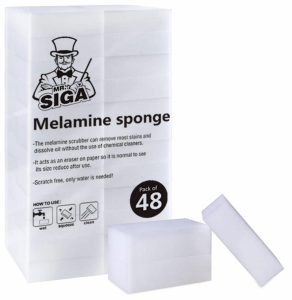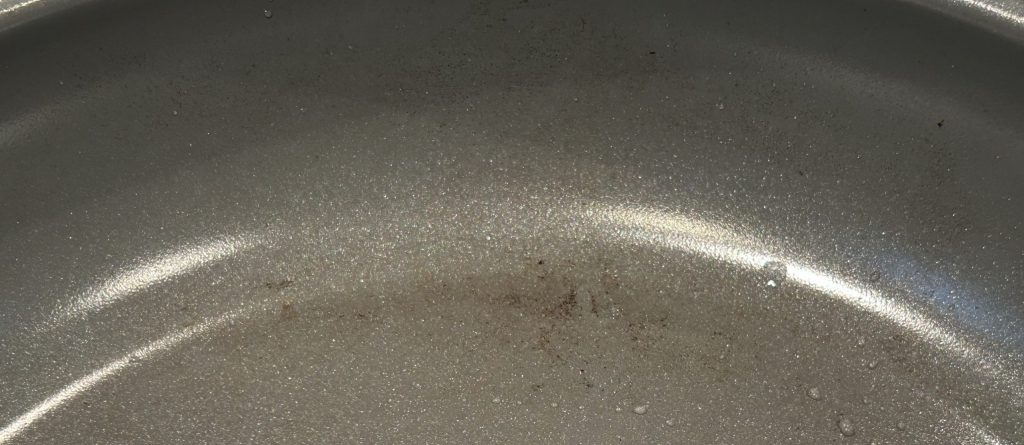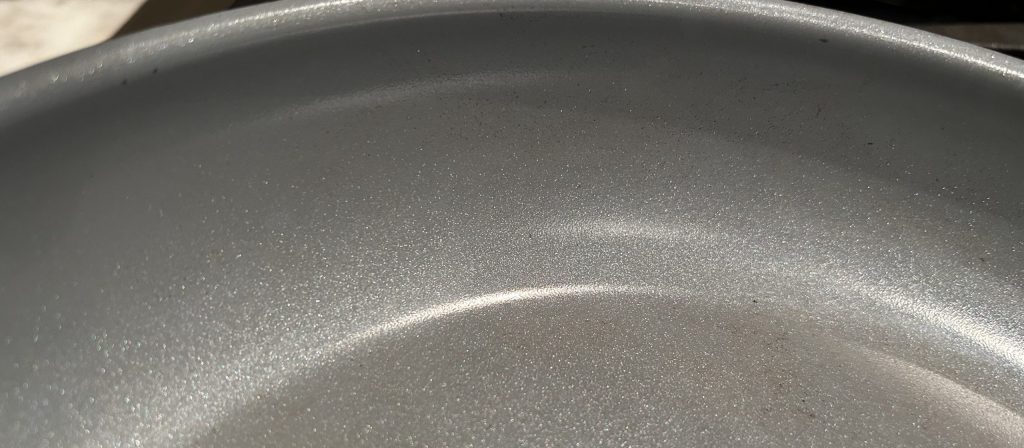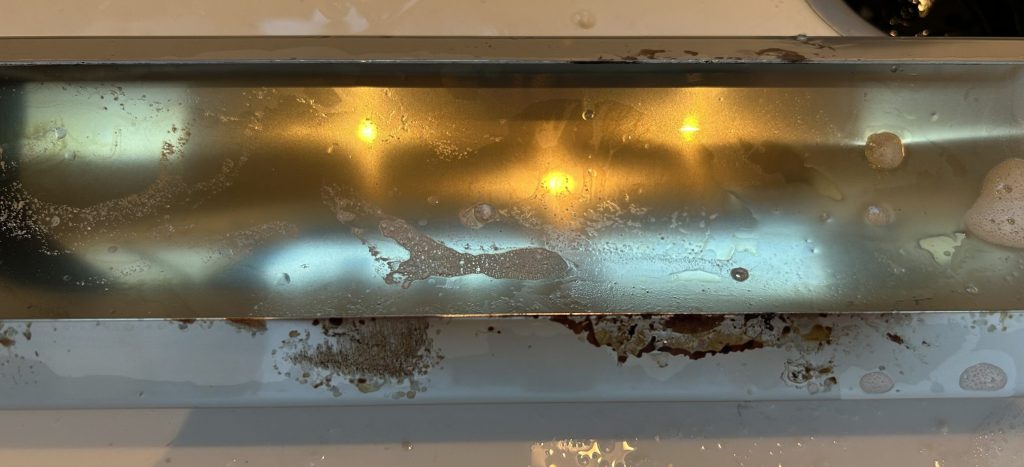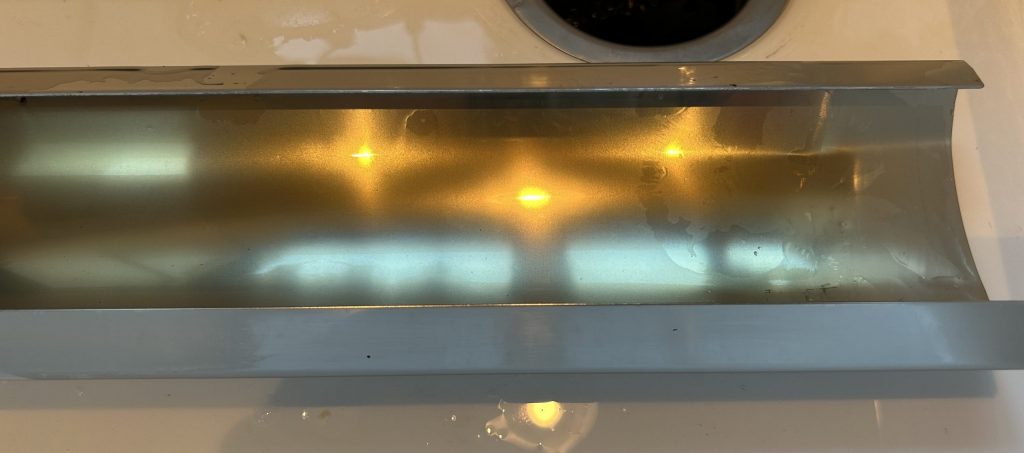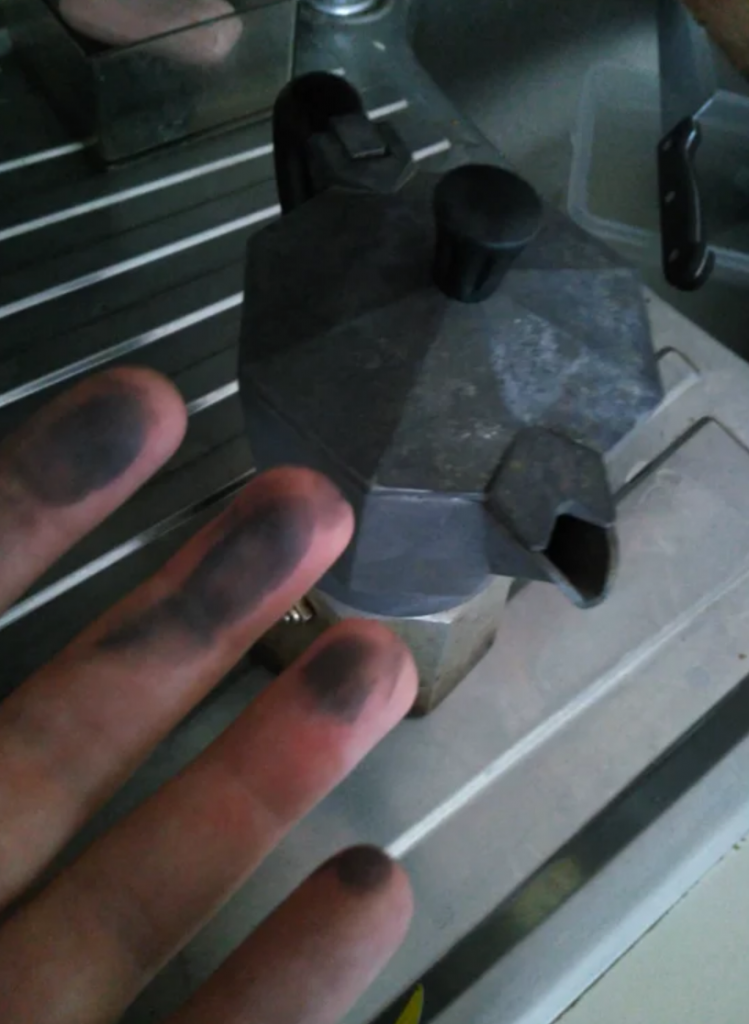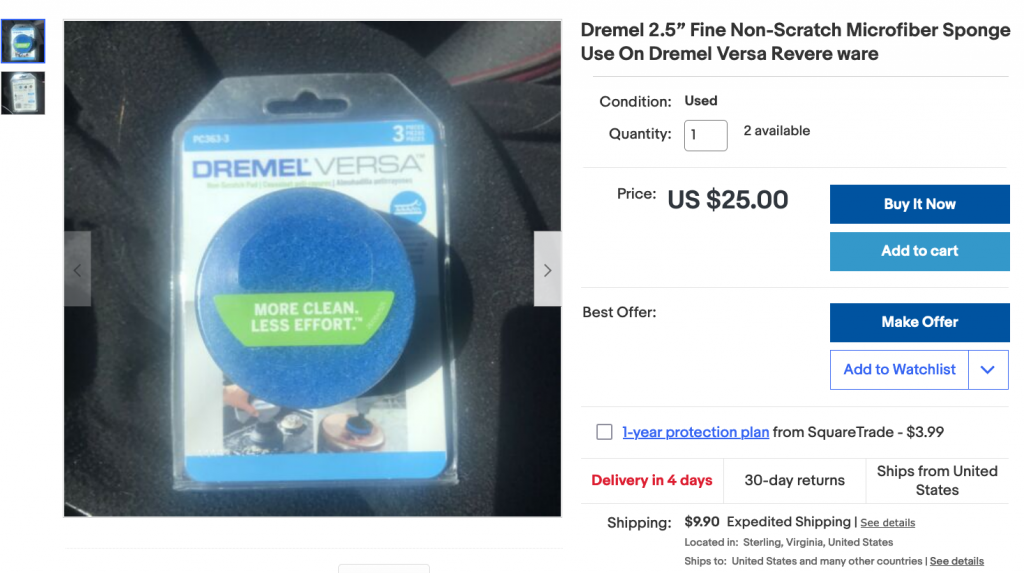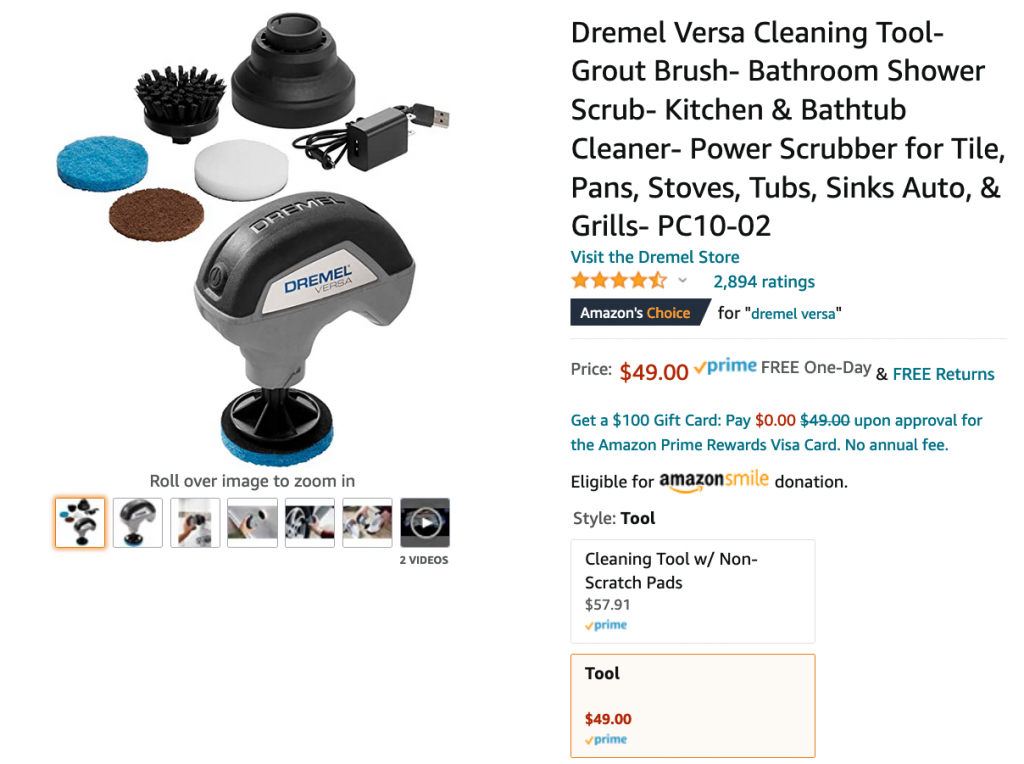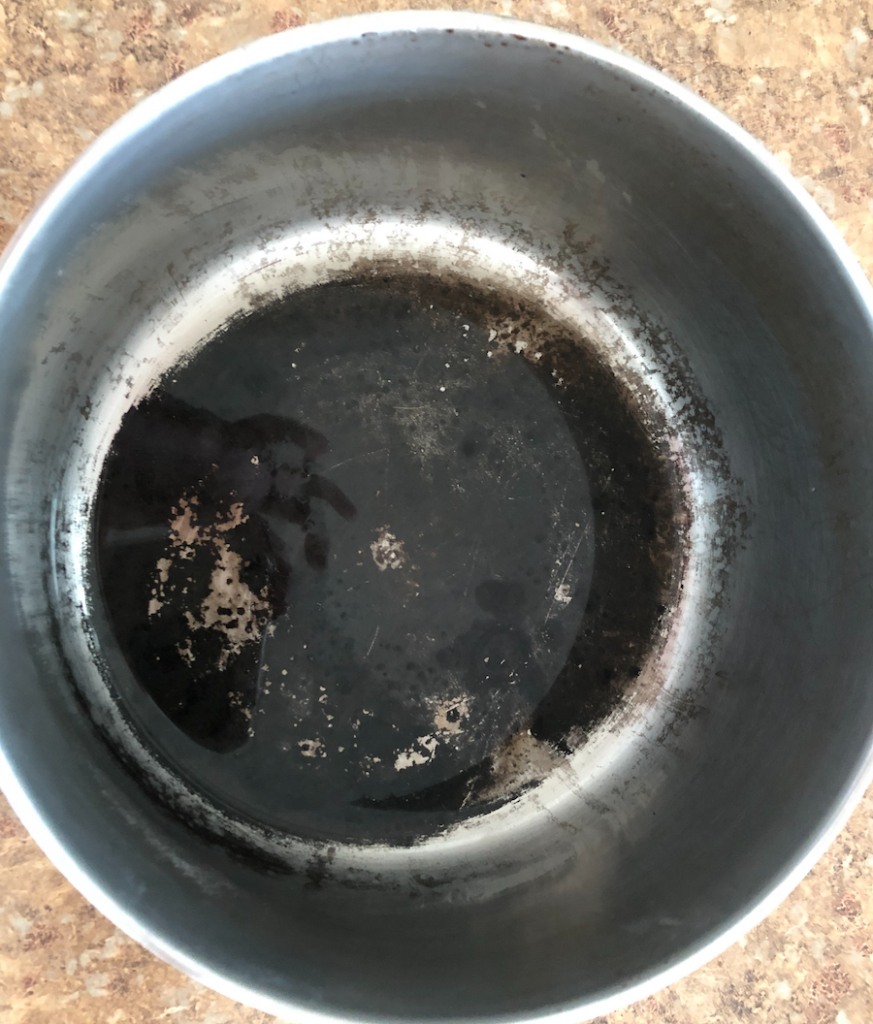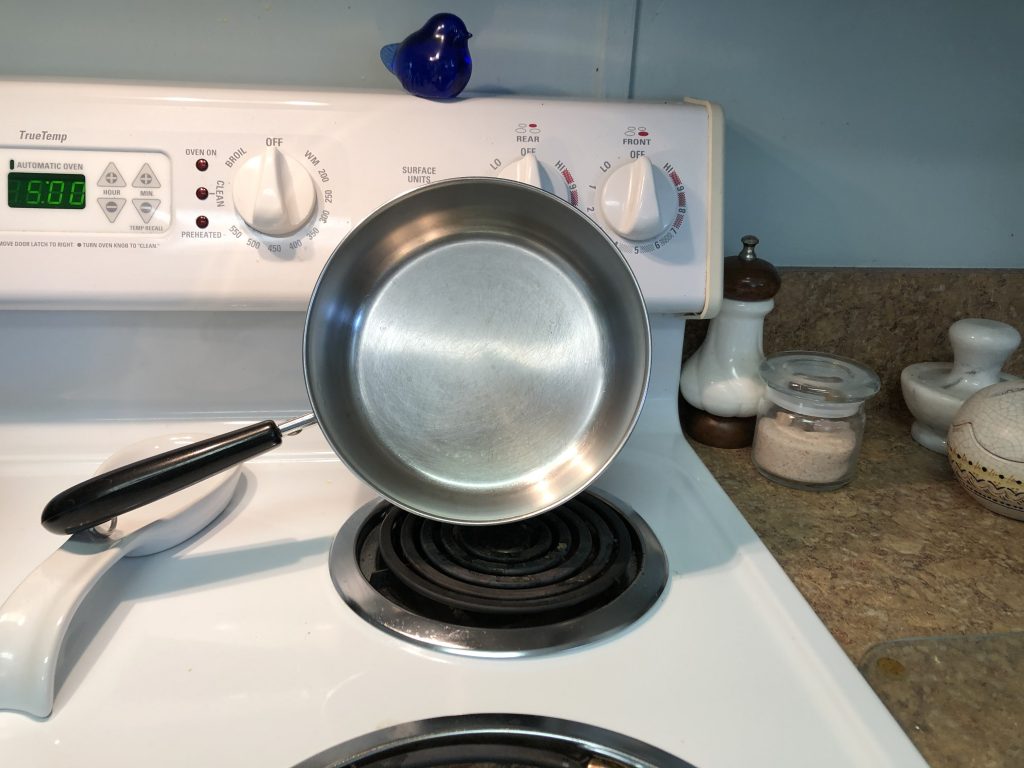I pride myself on savvy kitchen problem solving, but this one had me stumped for a bit.
We have a nice big white marble island in our kitchen. From time to time, it will get a stain, like the time the kids left a pink feather on the counter and it got wet; pink stain in the marble.
My go to for stains natural stone has been a baking soda poultice, which you get by just mixing baking soda with enough water to make it the consistency of toothpaste, apply over the stain liberally, cover with plastic, and it will pull the stain out of the stone. Mu understanding of how this works is that the water travels constantly between the stone and the moist baking soda, and the baking soda has a higher affinity to capture the stain molecules than the stone does, so eventually all the color ends up in the baking soda. Works like charm.
But it doesn’t work on every stain, and there are many types of poultice designed for specific stains.
About a week ago, my wife was soaking walnuts. We soak them to remove the bitterness (and make them easier to digest) and then dry them in our dehydrator. But this time someone bumped the bowl and some of the water got out and formed a puddle on the counter. A few hours later when I went to wipe it up there was a nasty brown stain about 10 by 18 inches long. It looked kind of like this, but much larger and slightly darker (I wish I had taken a picture).
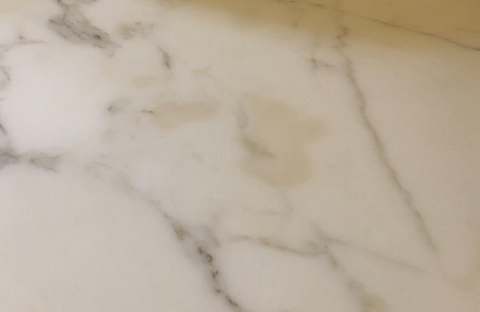
My trusty friend, the baking soda poultice, had no affect on this stain. I even let it sit for several days. I was a little worried that this stain might be permanent.
Searching the internet for how to remove walnut juice stains doesn’t bring up a lot of answers, as I think it isn’t a very common problem. Who other than the odd nut like us actually soaks walnuts?
I did find one roundabout reference to trying bleach on some stains. So tonight I sprayed some bleach water on the stain, and let it sit for a few minutes. Almost like a miracle, the stain … just … disappeared.
I still can’t quite believe it. I am quite relieved.
Hopefully this blog post makes it easier for someone else to find this solution directly.

